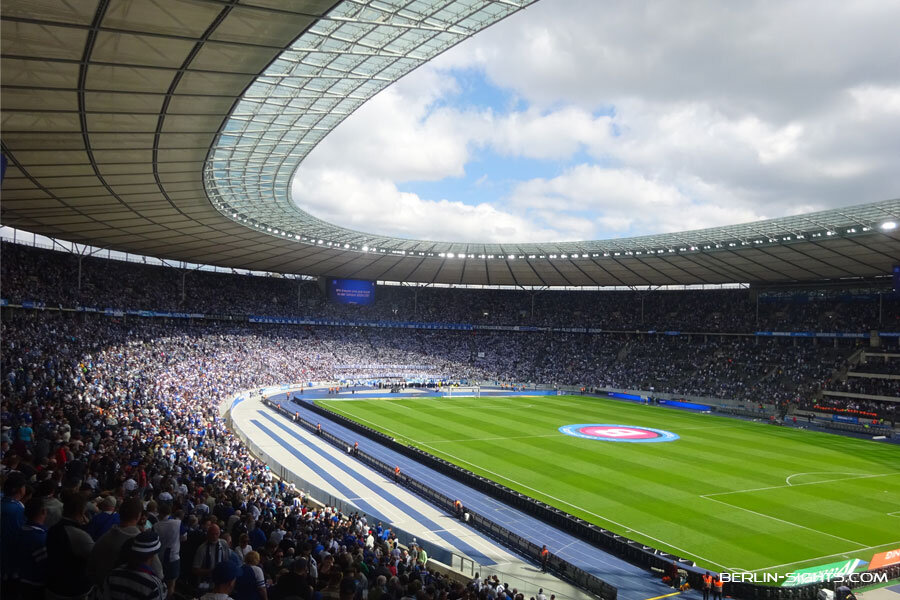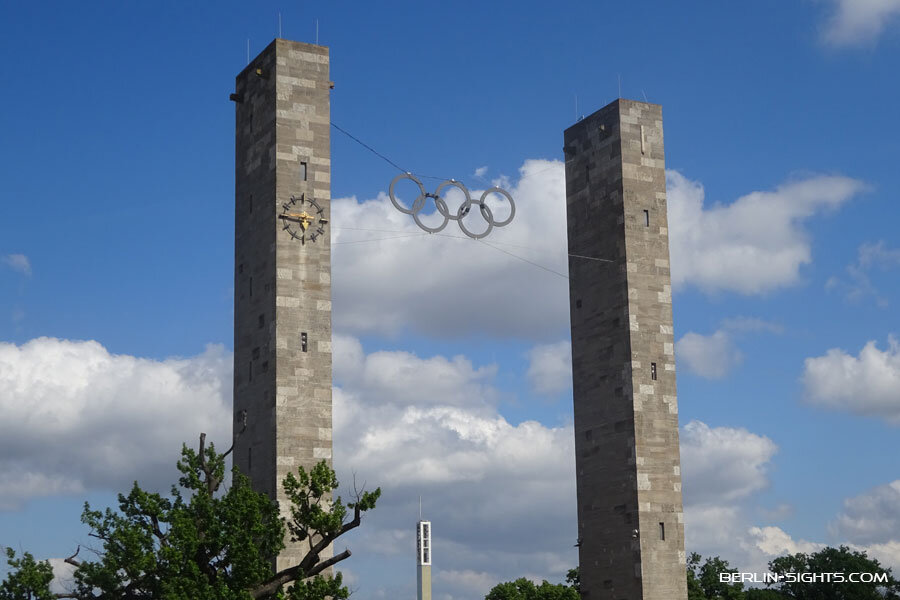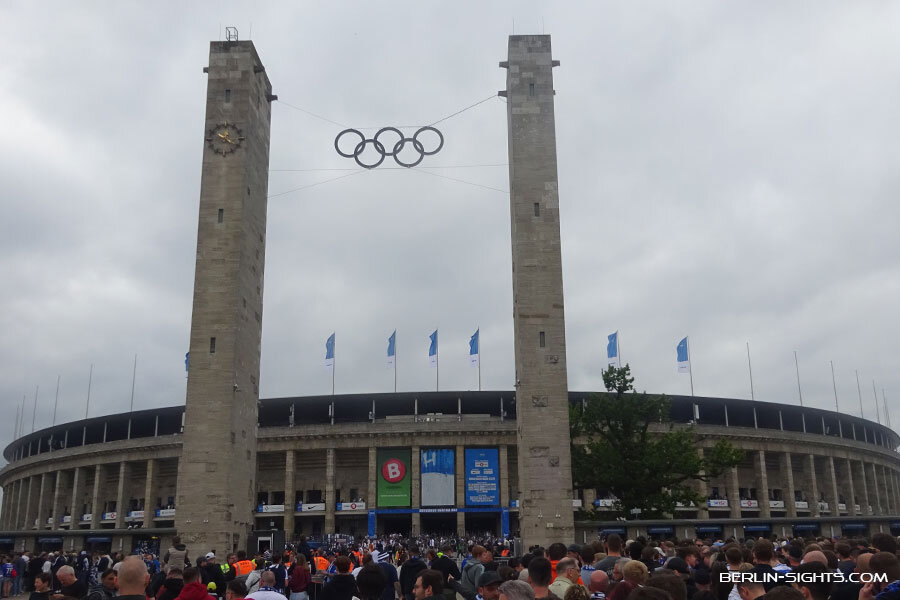
Olympic Stadium Berlin
Experience the majestic history and timeless architecture of the Olympic Stadium Berlin (Olympiastadion Berlin), once the center of the XI Olympic Games. Built from 1934 to 1936 for the Olympics, the stadium accommodated 100,000 spectators and was an architectural marvel of its time. Over the years, it underwent a fascinating transformation, from political rallies during World War II to modern renovations in the 2000s. Today, the Olympic Stadium, with 76,000 seats, provides a breathtaking backdrop for sports events and concerts, and is one of Berlin’s most important attractions. From the impressive partial roof to the largest VIP area in Europe, the stadium uniquely combines history and modernity. Step into a symbol of German history and sports, continuing to serve as a venue for unforgettable moments. Visit the Olympic Stadium and experience the fascination of past times and the excitement of present events.
table of contents
Olympic Stadium: Stadium for the XI Olympic Games
The Olympic Stadium Berlin, located in the Berlin district of Charlottenburg-Wilmersdorf in the Westend area, is an integral part of the Olympic complex, originally known as Reichssportfeld. Built from 1934 to 1936 for the XI Olympic Games, it originally accommodated 100,000 spectators. With its oval layout, a two-story colonnade on the exterior, and two independently accessed spectator tiers on the interior, it was an architectural marvel of its time.
In 1974, the first partial roof was introduced, and from 2000 to 2004, the stadium underwent extensive renovation and modernization. Today, it offers 76,000 spectator seats and hosts the largest VIP area in Europe with 113 boxes and 4,500 seats.
The Olympic Stadium serves as a venue for national and international sports events as well as major events such as concerts and religious gatherings. Several matches, including the final, of the 2006 FIFA World Cup were played here. The 2009 World Athletics Championships also took place here.
Olympiastadion Berlin: History
The Berlin Olympic Stadium has a rich history closely intertwined with the Olympic Games. Originally planned for the 1916 Games and inaugurated for Emperor Wilhelm II’s 25th jubilee, it was never used for the Olympics due to World War I. After years of German athletes being excluded, Berlin was selected as the venue for the 1936 Games in 1931. However, Hitler changed the plans and ordered the construction of a new grand stadium to make the Games a propagandistic event. It was Hitler’s first major construction project and cost around 42 million Reichsmarks. The 1936 Games ultimately became the first major event in the completed stadium, which was constructed in a record-breaking 28 months. At that time, it had a capacity of around 100,000 spectators.
During World War II, the stadium served as a venue for political rallies and was even used for the production of war materials. After the war, it returned to being a central venue for sports and cultural events. The 2006 FIFA World Cup marked another highlight in its history as the stadium was modernized and transformed for the tournament.
In 1974, the first partial roof of the stadium was constructed. In the winter of 1977, the staging of “Winter Journey” took place here. Between 2000 and 2004, the stadium underwent renovation and modernization for 242 million euros, including the construction of a roof over all 76,000 spectator seats. A new VIP area with 113 boxes and 4,500 seats was also created, along with a 140-square-meter stadium scoreboard, the largest in Europe.

Today, the Olympic Stadium serves as a venue for national and international sports events and competitions as well as major events like the German Protestant Kirchentag, the German Catholic Kirchentag, and concerts. Several matches, including the final won by Italy against France, of the 2006 FIFA World Cup were held here.
It also hosted the 12th IAAF Athletics World Championships Berlin 2009. However, there have been tragic events like the helicopter accident in 2013 and unusual uses like the Olympiastadion serving as a polling station for the Turkish presidential election in 2014.
Despite extensive renovations and modernizations, the stadium’s future remains uncertain as discussions continue about further renovations or the construction of a new stadium for Hertha BSC. Nevertheless, the Olympic Stadium remains a significant landmark of Berlin and a symbol of the city’s eventful history and German sports.
Olympic Stadium Berlin: Architecture and Layout
The Olympic Stadium forms the centerpiece of the Olympic complex, once known as Reichssportfeld. It encompasses the Sports Forum, the Hockey Olympic Stadium, the Olympia Reiterstadion, the Olympia Schwimmstadion, the Waldbühne, the Maifeld, the Bell Tower, the Langemarckhalle, and the Stadion Terraces. The main axis runs from west to east from the Olympic Plaza through the stadium to the Bell Tower and opens to the west of the stadium with a view over the Maifeld to the Bell Tower.
The stadium itself is an impressive earth stadium, with only the upper ring resting above ground level, supported by reinforced concrete pillars. It is clad in ashlar, mainly with Franconian shell limestone. The grandstand area is located to the south of the stadium, with large scoreboards on the east side. Two rings inside allow access to the lower ring and upper ring.
The exterior of the stadium is surrounded by a flat area, with rounded corners in the east. Sculptures and steles adorn the area, including the famous discus thrower and relay runner sculptures by Karl Albiker, as well as the horsemen by Joseph Wackerle. The Olympic Bell, a meeting point for spectators, stands west of the South Gate, while the Podbielski Oak near the main entrance serves as a natural monument.
Within the stadium complex, there are various facilities such as seating areas, boxes, press tribunes, a stadium chapel, and technical rooms. The stadium itself measures 303.48 meters in length and 228.31 meters in width and now accommodates 74,475 spectators following the completion of construction work in 2004.

Visitor Information
Address
Olympischer Platz 3, 14053 Berlin
Opening Hours
Except on match days of Hertha BSC and other events, the stadium is open daily from 10:00 a.m. to 6:00 p.m.
Olympic Stadium Berlin: Tickets & Tours
The Olympic Stadium hosts not only sports events but also numerous other major events. Among them is the Lollapalooza Berlin Festival.

